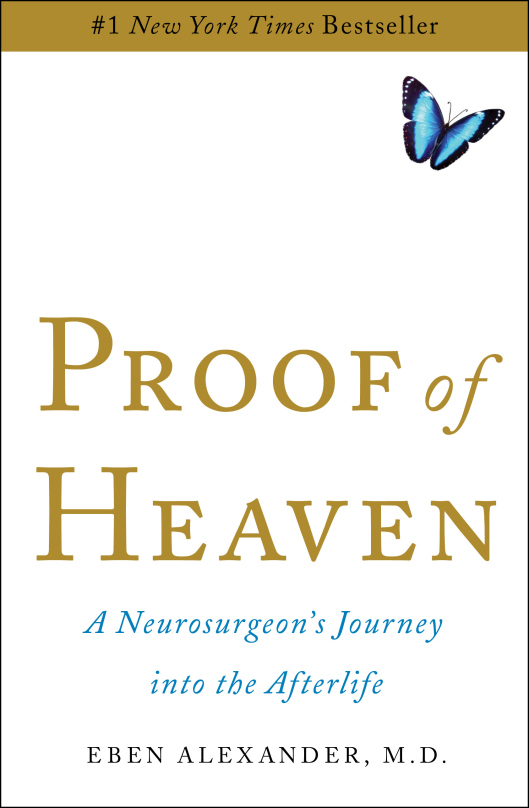
People seldom give any airtime to “psi” phenomena like Out of Body Experiences (OBEs) and Near Death Experiences (NDEs), and when they do it’s to mock or decry those who have been brave enough to self-disclose. According to our prevailing Newtonian-based scientific paradigm, OBEs are at the very least fictional narratives of the great beyond confabulated to distract from the sobering reality of ephemeral life and at most lucid hallucinations produced by the brain during times of acute stress. But preference for one phenomenological interpretation over another won’t change the fact that they comprise no empirical validity, or so we’re led to believe.
Nowadays the consensus amongst philosophers of science, neuroscientists, clinical and experimental psychologists, and the like is that consciousness, the multifaceted sensory information woven into an integrated perceptual experience of the phenomenal world, is an epiphenomenon of cerebral activation. Without glucose metabolism and electrical activation in the cortical and subcortical neurons there can be no consciousness. Hence all the cognitive and emotional output of the human mind is reducible to physiological interactions transpiring inside that complex meat factory within the skull, the brain. An empirical scaffold of this sort cannot and will not account for phenomenal exemptions whereby conscious awareness or an aspect of may temporarily disengage from its generator, meander about in psychic space, and then reunite with it. Allowing such conceptions into empirical grounds would be sacrilegious, an infinite regress to the magical thinking of our ancient ancestors.
In Proof of Heaven: A Neurosurgeon’s Journey into the Afterlife (2012) we learn that neurosurgeon Eban Alexander was a staunch advocate of this perspective, at least until his near-fatal brush with the angel of death. The predicament started one Sunday evening when Alexander’s back started to ache. Thinking that it was no more than a mild respiratory virus he chose to ignore it. In retrospect, the passive inaction nearly cost him his life–what had begun as a wave of pain coursing along his back swiftly snowballed into a grand mal seizure and a lethal lapse into unconsciousness. After his immediate transportation to the Lynchburg General Hospital emergency room, physicians ascertained that Alexander was suffering from an E. coli infection, a primordial strain of bacterial meningitis. E. coli bacteria subsist and thrive in the gastrointestinal tract of human adults and so under normal conditions they are neither foreign nor detrimental to the human body.
Evidently there are exceptions to this rule, such as when they enter the cerebrospinal fluid bathing the brain and spinal cord and begin to aggressively consume glucose and everything else in the immediate vicinity. The prognosis for victims of bacterial meningitis who seek medical attention after having suffered the first wave of neurologic detriments is uniformly gloomy, to say the least. Only about ten percent survive, and a significant proportion of these unfortunate souls will spend the remainder of their lives confined to the purgatories of a chronic vegetative state. This makes Alexander’s full recovery nothing short of a medical miracle; not only does he survive the menacing ordeal unscathed, he returns with first-hand experience of supernatural agencies and the paraphysical realms beyond. The profound knowledge and wisdom conveyed to Alexander during his seven-day sojourn from the phenomenal world (coma) is explosive, leading to a dramatic amendment of his existing weltanschauung and changing his life forever.

With his body under microbial attack, Alexander claims to have disengaged from the spatiotemporal dimension to which we are all bound before traveling out to psychic realms whose numinosity and aesthetic brilliance cannot be grasped nor described by commonplace semantic language. Having slipped through an interdimensional vortex Alexander finds himself at the Gateway, the entrance to the netherworlds. Noticeable at this point are the inspirited nature of both the disembodied entities and the surrounding environment along with the blurring of demarcations between them. Moreover there is no separation between intrinsic and extrinsic qualities; the iridescent, pulsating matrix of butterfly wings on which he is afloat is tantamount to the overpowering feelings of empathic joy and bliss arising from within. A visual percept will correspond to an intangible mental feature and vise-versa. For Alexander it’s also quite impossible to determine whether the butterfly wings are a phenomenal singularity or whether they are a flock of spiritual beings melding and moving together in harmony and unison as to create the illusion of Oneness.
After gaining a profound awareness of his surroundings, he is greeted by an attractive blue-eyed, blonde-haired girl decked in peasant-like garb which he later learns was a blood relation, his birth sister Betsy. Communicating telepathically she relays heartwarming messages translatable through ordinary language as, “You are loved and cherished, dearly, forever”; “You have nothing to fear”; and “There is nothing you can do wrong.” Penetrating deeper into the alternate reality he confronts “Om”, the creative intelligence or God and proceeds to rattle off innumerable questions about existence and the universe. During the silent communion with “Om” he learns that evolution and individuation are driven by teleological propensities and that evil plays a fundamental role in the development of consciousness; that parallel universes or realities exist; and that transmission between the latter is possible since they all emanate from the same divine source. Much of what he describes sounds hauntingly similar to the philosophical and spiritual doctrines of ancient Hermeticism, Neoplatonism, and Gnosticism which have survived through the ages. Might these phenomenal correspondences exemplify the authentic nature of atypical transcendental states attained by a heterogeneous group of individuals belonging to different cultures, races, and epochs? Certainly, one would think.
There’s also reason to believe that consciousness itself may be layered, like the skins of an onion. When Alexander awakens from the deathly coma he is no more than a shadow of his former self. He doesn’t remember the faces of loved ones, has no memory of his past, articulates in a sluggish and sometimes incomprehensible manner, and undergoes some involuntary psychotic intrusions with rocket, skydiving, and airplane themes that frighten him immensely. Gradually, though, his reactivated cerebral hardware recovers its bearings and hitherto absent parts of his identity, cognitive capacities, and characterological disposition–a unique flair for diction, recognition, memories, mischievous streak, unique sense of humor, and personal sphere of scientific knowledge –all return as if they were conjoining beads of a pearl necklace. This curious phenomenon is often observed and cited, sometimes in meticulous detail, by other individuals who have endured OBE’s and NDE’s.
Alexander’s published recollections have not escaped the critical, sagacious eye of other scientists and neurosurgeons, many of whom have sternly endorsed a conventional neuroscientific hypothesis for the sake of dissuading metaphysical speculation. His visionary NDE has been contextualized as a coping mechanism deployed by the primitive brainstem during times of extreme pain and suffering; as a limbic system discharge of distorted, hallucinatory memories; as vivid hallucinations produced by serotonin agonists like DMT; as ongoing activity in preserved cortical networks; as subcortical activation or processing; as damage to the trophotropic or inhibitory systems, allowing vision neurons to fire impulsively; and as atypical activity in an archaic visual pathway of the midbrain. Alexander rejects these explanations, claiming that the multifaceted and interactive nature of his experience necessitated the functioning of auditory and visual regions of the neocortex which had been rendered defunct by the microbial assailants at the inception of the coma.
After finishing the book it occurred to me that Alexander has given as wide a berth as possible in honoring the spirit of critical inquiry, a nonbiased conceptual arena from which we may all extrapolate our own conclusions. Hopefully most would be so kind as to come up with them after reading the book and some of the related literature on NDEs, not beforehand…









